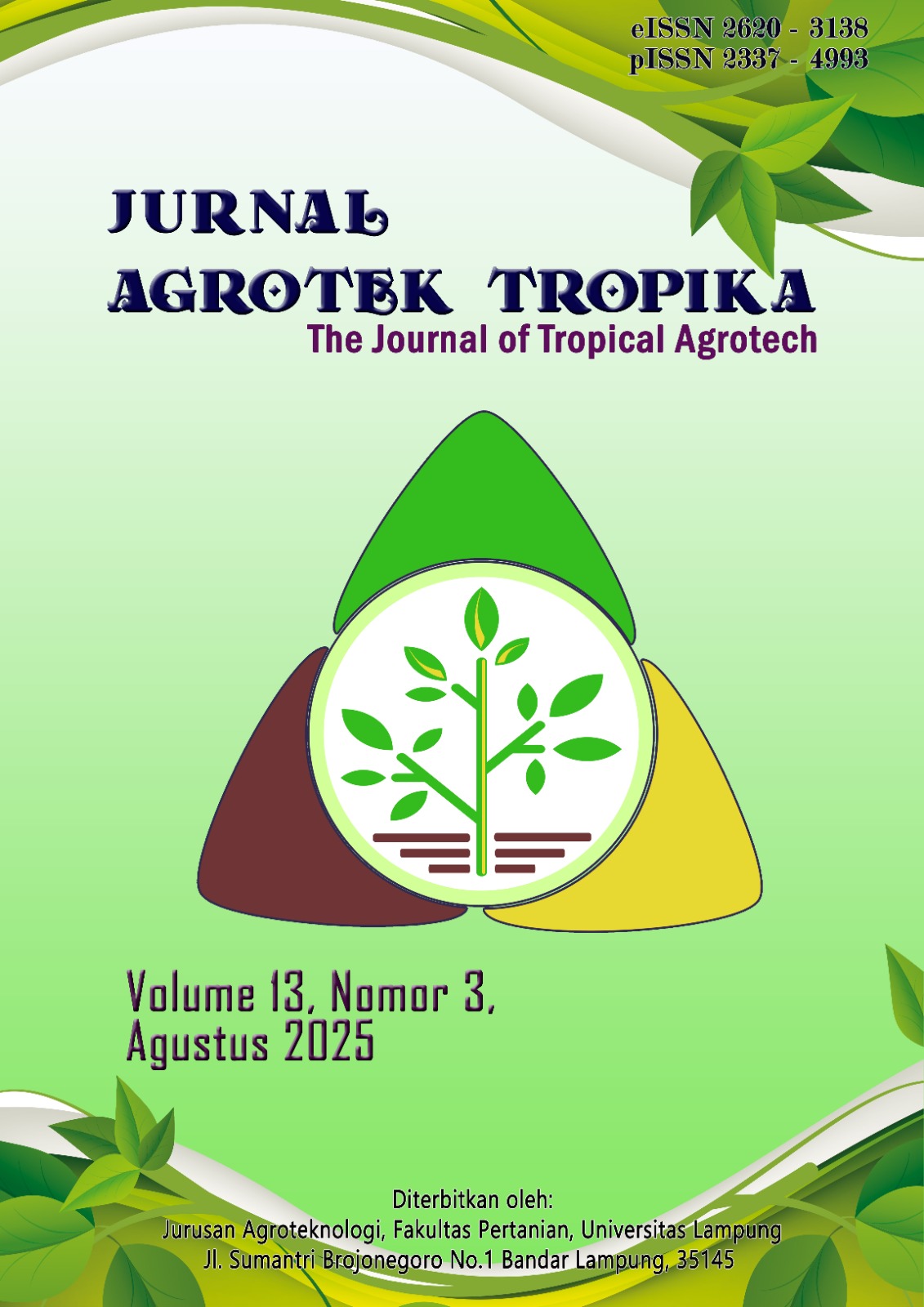APPLICATION THE EFFECT OF EMPTY PALM OIL BUNCH ORGANIC FERTILIZER RESIDUE AND NPK FERTILIZER IN CORN PLANTING ON SANDY SOIL
DOI:
https://doi.org/10.23960/jat.v13i3.11480 Abstract View: 46
Abstract View: 46
Abstract
Conditions on sandy soil aggregate stability are generally classified as weak. This is because the sandy soil itself has a low organic matter content so that only a few plants can grow on the soil. Therefore, efforts must be made to improve the aggregate stability of the soil. The way that can be done is by adding organic fertilizer of empty palm bunches and also NPK fertilizer. This research was conducted from July 2023 to March 2024 in Marga Agung Village, South Lampung Regency. This study itself was carried out by applying a Randomized Block Design consisting of 7 treatments, namely A = Control; B = 1 NPK (350 kg/ha Urea, 100 kg/ha SP-36, 75 kg/ha KCl); C = ¾ NPK; D = ¾ NPK + 2 tons/ha Organic Fertilizer; E = ¾ NPK + 4 tons/ha Organic Fertilizer; F = ¾ NPK + 6 tons/ha Organic Fertilizer; G = 1 NPK + 8 tons/ha Organic Fertilizer. Then for the observation variables themselves, which include aggregate stability, c-organic, soil texture, and soil density. The results itself was analyzed using quantitative and qualitative methods by contrasting the analysis data which are contained determination class criteria. The results indicated that aggregate stability does not have a significant effect the residue of organic fertilizer of oil palm empty fruit bunches (TKKS) and NPK fertilizer. Treatment E = ¾ NPK + ½ Organic Fertilizer has the best aggregate stability compared to other treatments.
Downloads
Downloads
Published
How to Cite
Issue
Section
License
Copyright (c) 2025 Cindy Fidia Salsabilla, Afandi Afandi, Didin Wiharso

This work is licensed under a Creative Commons Attribution 4.0 International License.
Jurnal Agrotek Tropika (JAT) is licensed under a Creative Commons Attribution 4.0 International License.
The copyright holder is the author. Authors publishing under any license allowed by the journal retain the copyright and full publishing rights without restrictions.
The Creative Commons Attribution 4.0 International (CC BY 4.0) license allows users to copy, distribute, and adapt the work, even for commercial purposes, as long as proper attribution is given to the original creator. This is a highly flexible license that encourages widespread dissemination and use of creative works, supporting innovation and collaboration across various fields.











